An ever-changing representation of a person’s character, jewelry is the perfect teller of art and personal expression. With the passage of time, new trends of jewelry bloom and blossom; some stand the test of time and some sway away.
Rooted in Egypt since ancient times, jewelry was evidently made to beautify the wearer and serve as a talisman of power. Egyptians loved wearing elaborate headpieces, carved rings, dangling earrings, and artistic necklaces to display the wealth and power of the pharaohs. In fact, jewelry was worn by all, adapting to the status of the wearer. Egypt’s jewelry traditions developed throughout its lengthy history, encompassing a plethora of designs, materials and influences.
In contemporary Egypt, namely in the past years, a myriad of Egyptian brands have developed, uncovering the true essence of jewelry-making today.
The Cutting-Edge Designers
For over 50 years, internationally renowned jewelry brand Azza Fahmy has secured a position of being one of the pioneers in the modern jewelry industry in Egypt. Azza Fahmy’s collections marry two important elements; being rooted in Egyptian culture and art whilst simultaneously remaining open to modern techniques and theories of applications.
The brand treasures the essence of Egypt’s history in its vision, with a careful application of gold, silver, precious and semi-precious stones.
Skilled gold and silversmiths bring Azza Fahmy’s pieces to life by incorporating the filigree and hand–piercing techniques. The filigree technique is based on the twisting of two metal wires and then flattening and cutting them into small pieces, which are then fashioned by hand with special tools. The craftsmen who specialize in filigree work do nothing else and are known as shafatisha.
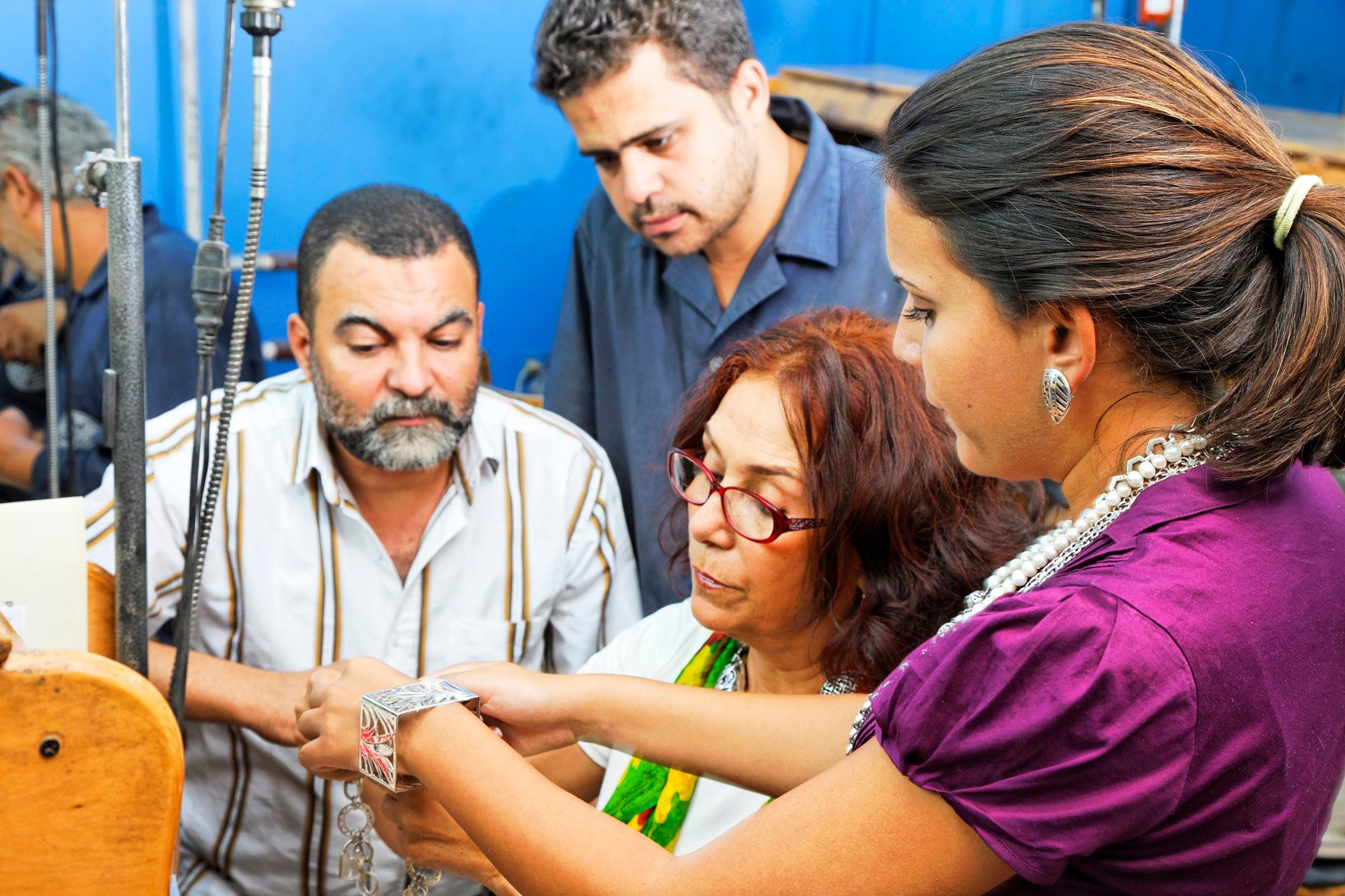
The design process for each of the brand’s collections is long and hefty as it commences 18 months before it is due to launch. A lot of aspects are taken into consideration, such as global trends, cat walks, and assessing the world’s environmental, economical and ‘emotional’ climate, recounts Amina Ghali, head designer for Azza Fahmy.
The creation process for Azza Fahmy, Ghali explains, is part of what makes Azza Fahmy stand out.
“After putting together mood boards, we start with the hand sketches, a draft of the preliminary drawings of the pieces,” Ghali describes. “We then research motifs, calligraphy, stones, and colors. We then move to the 2D sketches phase, which gives us a better idea of dimensions.”
“The sampling process comes next, and, in this phase model, makers and craftsmen work hand in hand to make sure that the idea of the designer is being executed in the best possible way bearing in mind technique, wearability, intricacy and sophistication in the final product. Once everyone is happy with the outcome, a final sample is represented to the designer for final approval.”
Egyptian jewelry brand Jude Benhalim has evidently woven itself into the industry with bold and modern styles that intertwine subtly with Arab culture.
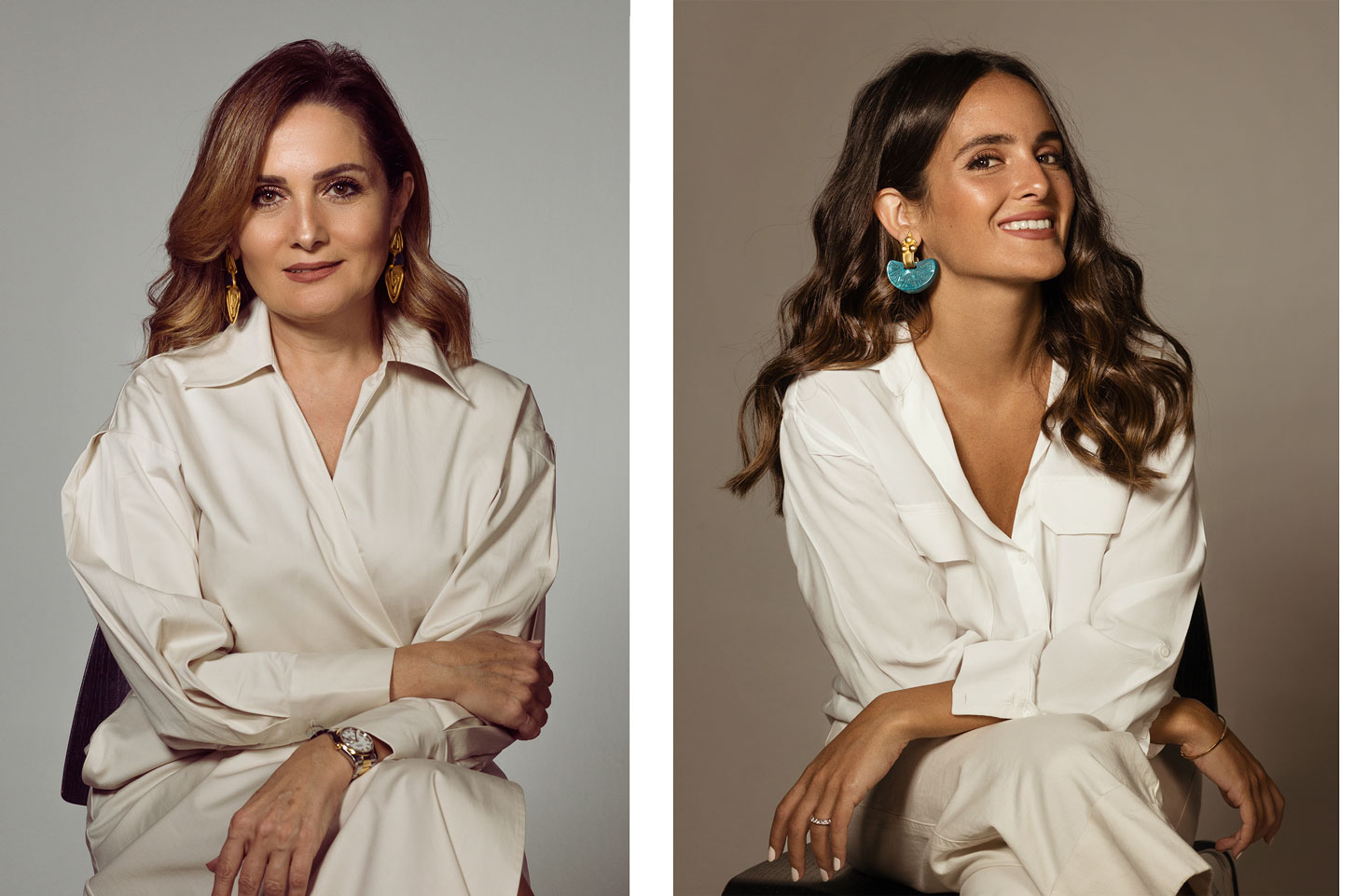
“For 10 years now Jude Benhalim Jewelry has introduced unique designs and interchangeable styles across jewelry categories,” explains Jude Benhalim, co-founder, head designer, and namesake of the brand. “Our jewelry embraces all when it comes to design and identity, as well as the women we cater for.
“Our designs encompass the multiculturalism of the modern world without losing sight of our Arab roots and their design tropes – a combination of contemporary art and oriental Arabic craft,” she adds.
The creation process for Jude Benhalim is intricately detailed as the inspiration stems from external surroundings that later manifest into sketching and developing themes and designs.
“I draw inspiration from my surroundings, so when it’s time to sit down to work on the next collection, the sketching begins and develops and I delve deeper into the themes,” she tells Egyptian Streets.
“Then the final renders are entered into a prototyping cycle to iron out any imperfections, altering closures, sizes, weights, exact colors, the way the pieces sit when worn, etc. Each piece is hand-crafted so it’s a lengthy process. We’re currently undergoing all these stages with our upcoming collection expected to be released in March 2022. It’s all very exciting,” says Benhalim.
The brand’s cutting edge features include its efforts to incorporate sustainability into its practices. Not only are their pieces made of recycled metals, but the production process involves utilizing the artisanal skills of localized designers.
All Jude Benhalim jewelry is designed, assembled and hand-finished in their Cairo studio using only the finest 925 silver and 18k gold plated brass as well as custom-made Resin stones.
“We use recycled brass and recycled crushed resin where we can, in the past we’ve done many sustainable collections and all-resin collections to adhere to our zero-waste policy in the workshop,” she assures. Resin is a material that isn’t widely used in jewelry-making, but our workshop has perfected the process of custom-making and shaping each resin stone and hand-dyeing exact color formulas. Going through multiple processes in order to achieve different effects like pearlescent, crushed, iridescent and solid matter,” adds Benhalim.
The connoisseurs of jewelry-making in Egypt have inspired many emerging local brands to surface in the industry. Today, aspiring jewelers and independent jewelry making have taken to social media, namely Facebook, Instagram, as well as local markets to exhibit their creations.
A newly created jewelry brand in Egypt, SOL, was created in 2019 though initially, it was not meant to sell jewelry at all.
“SOL was initially planned to be a swimwear brand, we wanted to incorporate some small mother of pearl pieces in our designs,” says SOL founder, Yasmine Hany.

“In the process, we found the mother of pearl colors and energy to be very interesting, and back then it wasn’t really present in the Egyptian market so this was our green light to invest in it and create a jewelry brand that showcased the beauty of small pieces of the ocean in the form of handcrafted timeless and minimal pieces.”
A brand for the young-spirited and those who are unafraid of being unapologetically themselves, SOL was created to bring nature’s beauty in the form of functional handcrafted jewelry pieces with complex designs that can be worn on a regular basis.
“The main materials used in our designs are Abalone mother of pearl, freshwater pearls, 925 silver and 18 karat gold,” says Hany. “We’ve recently been thinking outside the box and have launched our latest jewelry collection “Dancing Fever” showcasing many interchangeable pieces produced using both gold and silver, also complementing the mother of pearl. We have a wide range of both statement and minimal stackable pieces, and have been launching some unisex pieces as well.”
With many aspiring to create an international namesake for themselves, brands are scrambling to enter the industry, one of the fastest-growing segments of luxury. Even if upcoming brands lack the training and in depth knowledge of high-end jewelry making, they compensate with brand strength.
En route to the self-discovery journey comes Sandbox designs, a newly emergent jewelry brand in Egypt that alludes art, power, and fluidity.
“Sandbox designs acknowledge the modern woman’s need to feel both rooted and independent,” Sandbox Jewelry founder Suhayla Al Sheikh tells Egyptian Streets. “Fueled by this, Sandbox creations carry a sense of quirk that feels native but also modern and eccentric. As a brand, Sandbox offers an all-round experience that doesn’t end with the purchase of the jewelry piece. The brand offers a line of jewelry care products to help elongate the life of every customer’s precious piece.”
The brand also carries social awareness, story-telling, connection, and environmental responsibility. When you become a part of the Sandbox experience, you also become a part of something bigger and some sort of journey of self-discovery,” Al Sheikh adds.
The Making Of
The common denominator in the aforementioned Egyptian brands is that they all rely on artisanal local craftsmanship, with the pieces rendered being infused with Egyptian culture and history.
Jude Benhalim prides itself for its commitment to local craftsmanship, where all the pieces are produced locally.
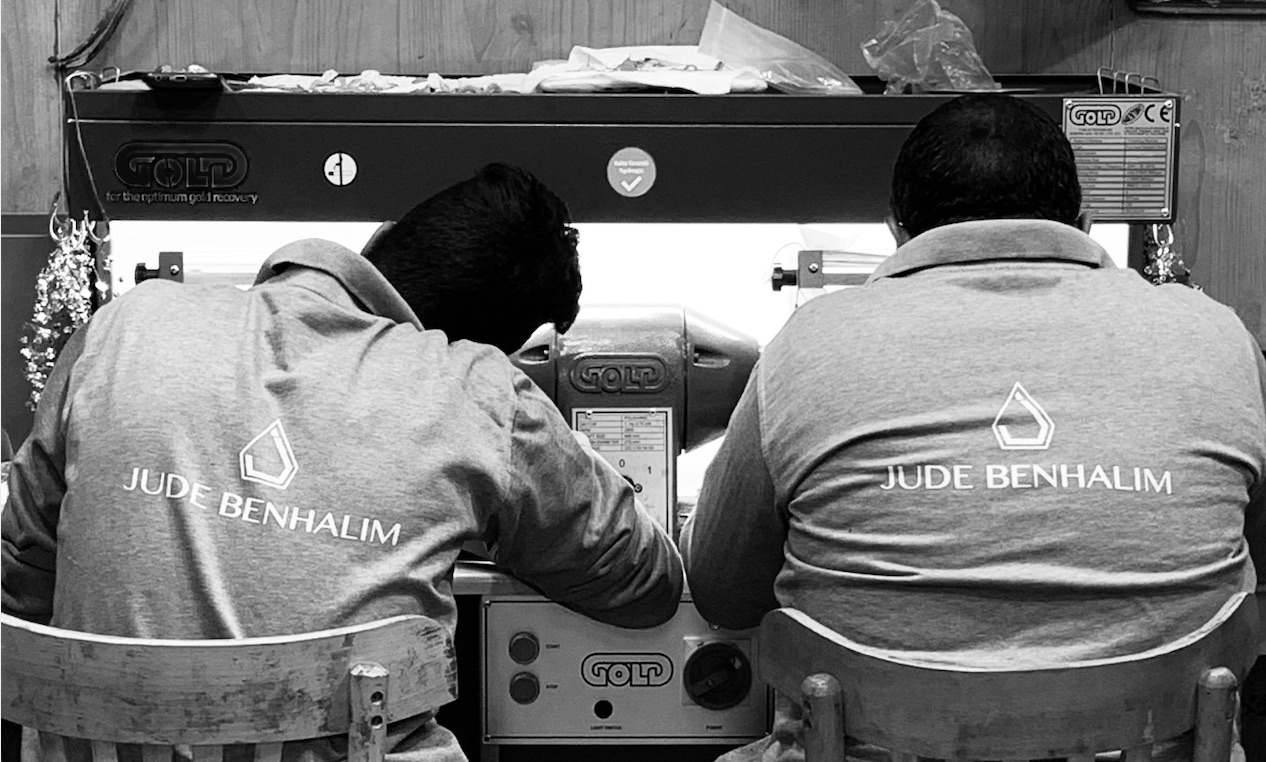
“We’ve always produced our jewelry locally, seeking out local craftspeople in the heart of Egypts crafting melting pot of Khan El Khalili,” says Benhalim. “We stay true to the crafting process and highlight the importance and value of hand-crafted jewelry. It’s important to raise awareness because craftsmanship is slowly disappearing in this technologically driven world.”
Azza Fahmy’s jewelry is also characterized by its intricate craftsmanship, where techniques that have been preserved in Egypt are still used. Their signature is highlighted in the efforts to incorporate different cultures into wearable art, where each piece of jewelry is centered around an inspirational motif or pom that carries a personal message to its wearer. Arabic calligraphy and combining silver and gold are some of Fahmy’s signatures.
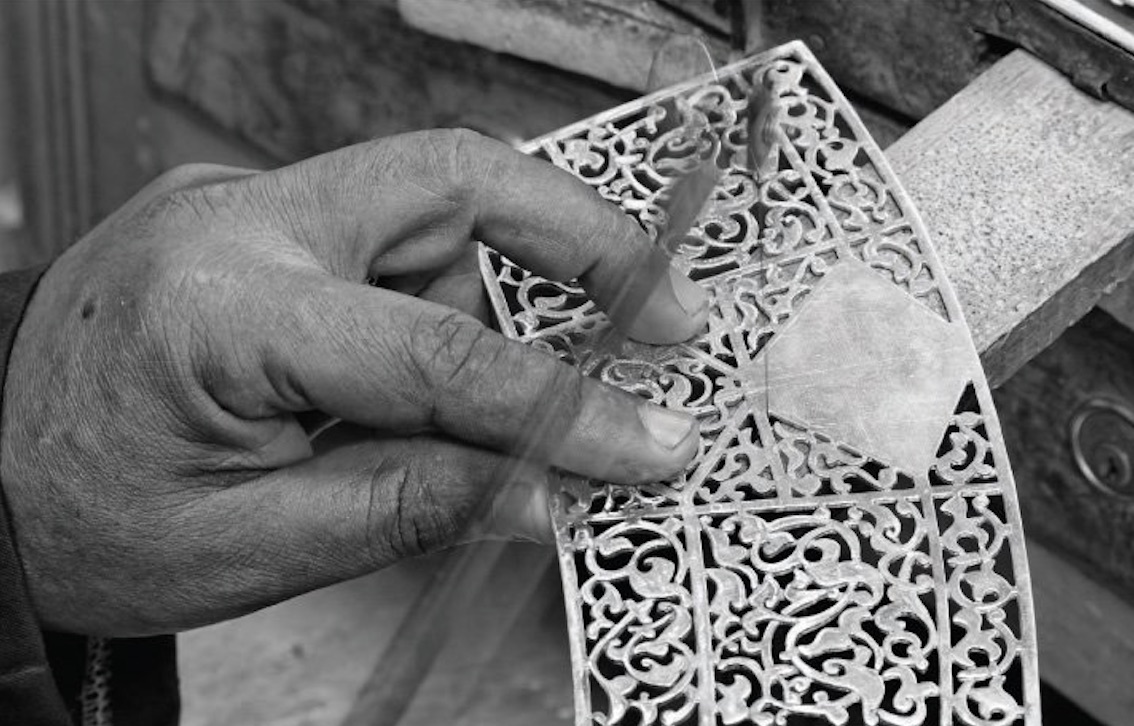
Jewelry brands embrace their uniqueness with certain characteristics that distinguish them apart from other brands. Sandbox’s cutting-edge characteristics are included in their jewelry stones and recycled materials.
“Like many brands Sandbox uses sterling silver, 18 karat gold and natural stones. However what makes us different is the way we use these materials and the techniques we implement. For instance, Sandbox has a signature stone crushing technique that makes our stones look rough and grainy. We also use recycled sterling silver grains in their raw untouched form; a sandbox staple,” explains Al Sheikh.

Many Egyptian local brands thus rely on deriving inspiration from the tides of culture permeating Egyptian history. Coptic, ancient Egyptian and Islamic cultures all enjoyed distinct aesthetic influences, materials and techniques that have proved to be intemporal in their popularity.
The Changing Tides of Trends
While jewelry brands have been fashioning their own unique identities and signatures, it is evident that there are trends that bend and change over the course of time. Although the pieces produced by the brands do not particularly depart from the brand’s original vision, they nonetheless subsume to the changing tides of fashion trends, and the wearer’s desires.
According to the New York Times, the COVID 19 pandemic did not preclude the sale of jewelry, but maintained it. Clients favored fine-luxury, even when sold at a distance, proving that Egyptian brands were on track to embrace e-commerce, customization and experimentation.
“There has definitely been a change in the trend of jewelry in Egypt,” says Benhalim. “Ultimately, it all comes down to personal style and preference, but personally I have noticed that there’s been a general shift, especially since COVID-19.”
“People are generally starting to appreciate the beauty and intricacy of design elements that add character and personality to the pieces. Nowadays, jewelry isn’t only worn to accessorize, but also used as statement pieces in their own right,” she adds.
With Azza Fahmy, one of the brand’s most significant goals is to integrate its expertise by giving fresh talents the right tools to explore and create their art.
“When Azza Fahmy first started, the founder put on her overalls and spent days at a workshop full of men to teach herself the tips and tricks of jewelry-making,” says Ghali. “Today, we see more designers taking changes and creating their own lines of jewelry due to opportunity.”
The Design Studio by Azza Fahmy is the first and only contemporary jewelry-making and design school in Egypt and the Middle East. It was established in 2013 to provide quality education through programs developed in collaboration with international teachers and designers with extensive global experience in design. The school’s aim is to cultivate creativity and passion for fresh talents by giving them the right tools to create and explore art.
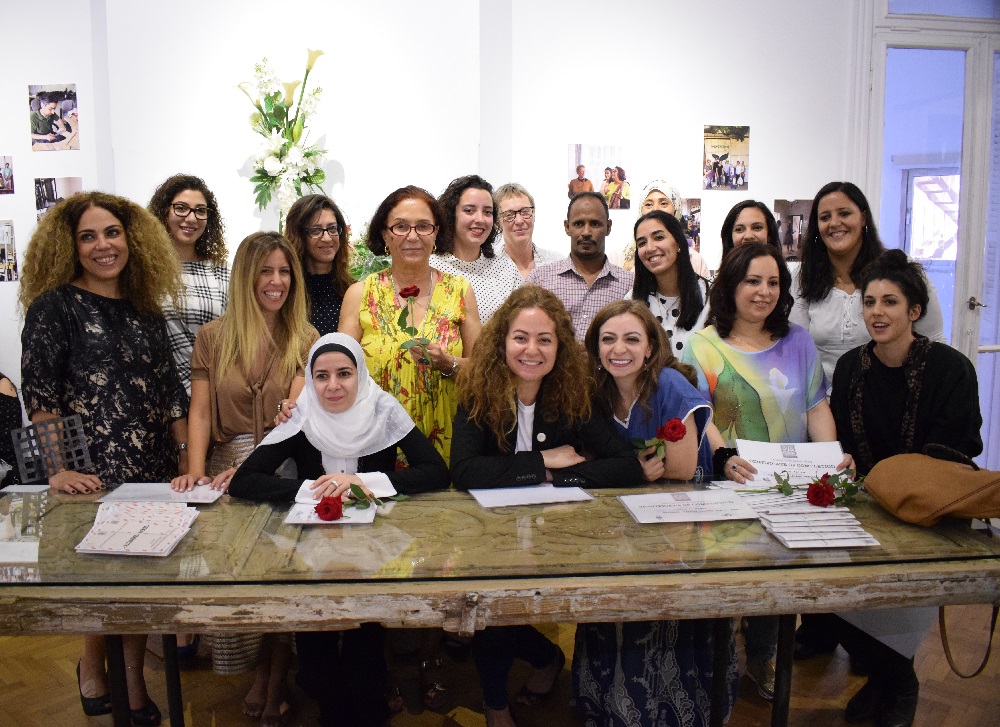
Azza Fahmy aims to create timeless pieces with every collection through its rigorous research and design process. The brand also makes sure to integrate their time-honored jewelry techniques that have been inspired by 7000 years of history and modern cultural references or adopting newly inspired art, music, and architecture.
A brand’s distinction is evident in the materials used that work well in accordance with the brand’s identity, direction, and vision. However, sterling silver is very accessible in Egypt, hence many local jewelry brands opt to use it in their products, as Hany explains.
“There has been a change in the trend of jewelry in Egypt,” she says. “Trends such as polymer clay and enamel colorful jewelry emerged in the last couple of years as well as gold plated jewelry. Ever since COVID-19 emerged, bigger jewelry pieces have become trendy because during quarantine, people started to look for jewelry that will show well through screens, since everything became digitized.”
Al Sheikh believes that Egyptian jewelry generally has a certain theme, where the jewelry either holds Arabic calligraphy or pharaonic inspirations. However, Al Sheikh underscores that a few brands in Egypt have been breaking out of this mold by presenting new and fresh voices in their designs as well as incorporating new cool takes on what has already been established.
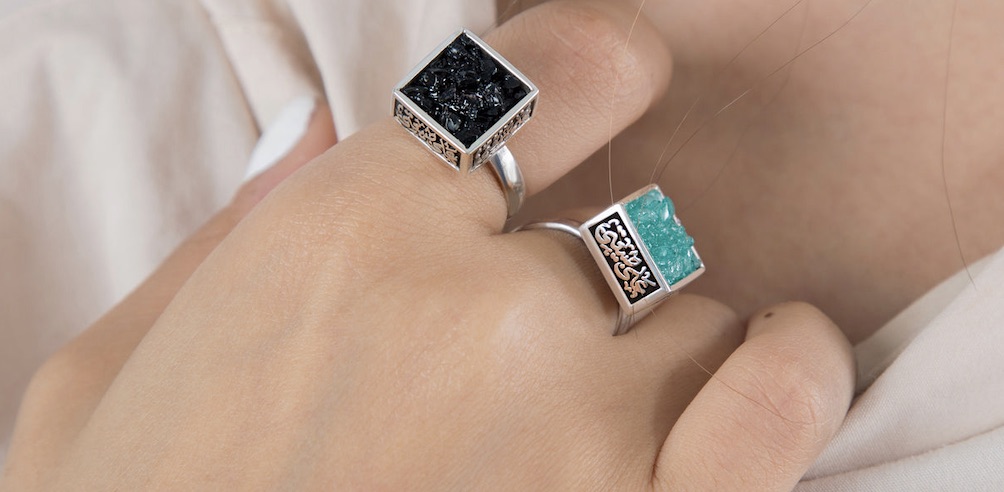
“When it comes to designers, we can see the change happening as designers are becoming more experimental, free, and unlimited with their creations, approaches, and inspirations,” Al Sheikh says. “We also see men’s jewelry on the rise and becoming more commonly accepted.”
“When it comes to the Egyptian consumer though, we have all kinds of styles, and not all necessarily abiding to a particular trend. We have people interested in fashion jewelry, and other people are interested in fine jewelry. Some people are interested in jewelry stacking while others opt for a more minimal look, and others enjoy a little mix of everything. There is not a particular trend in jewelry-making, nor should there be,” she concludes.
The ever-shifting jewelry industry has woven itself into women’s closets for the longest time; however, the next step for the dynamic trends of jewelry making in Egypt is to see an embrace in men’s jewelry collections.







Comments (0)